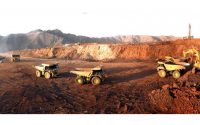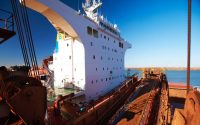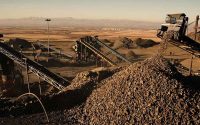Iran is pushing to steadily increase its iron ore output in order to make steelmakers less dependent on imported feedstock and better able to curb their production costs as they significantly ramp up steel output over the coming years, delegates heard at an industry event last week.
Iran sees its wealth of iron ore and natural gas reserves providing a major advantage to its steel exporters, iron ore producers and steel exporters association Iropex head of international affairs K Jafari Tehrani said. The country is estimated to hold around 4bn t of iron ore reserves, of which less than 10pc has been explored, suggesting that this reserve estimate could be revised upward in the future. The government is keen to support new exploration work and attract foreign investment to fund it, Tehrani said.
Iran’s iron ore output and export volumes have slumped over the past two years because of the sharp drop in global iron ore prices, with 2015 production down to 36mn t from 56mn t in 2013, and exports falling to 14.1mn t from 23.6mn t over the same period. But Iran plans to steadily ramp up volumes over next decade, and is targeting 2025 output of 55mn t and exports of 10mn t.
Some producers are already considering whether to restart their idled operations in light of the recent global iron ore price rally, but are reluctant to proceed until prices stabilise, market participants said.
The Iranian government is trying to encourage Iranian iron ore producers to direct their tonnage to the domestic market rather than export, as part of efforts to increase pellet and direct reduced iron (DRI) capacities this year, and boost Iran’s steel output. To this end, it has told the country’s exporters that they must pay tax on all their income from iron ore exports this year.
Iran’s plans to ramp up steel production and exports are ambitious. The country’s official plan puts 2025 crude steel production at 55mn t — compared with 2015 output of 16.11mn t — for which it estimates that Iran will require 159mn t of granulated iron ore, 90mn t of iron ore concentrate, 92mn t of pellet and 60mn t of pig iron. Some steelmakers are already starting to release details of their contribution to this ramp-up, with a Khuzestan-based steelmaker last week confirming that it plans to produce 17mn t of semi-finished products in 2025 — up from its 2016 target of 5mn t.
With production costs and pricing such critical factors for success in the steel business, iron ore self-sufficiency would significantly help steelmakers to produce more cheaply and stabilise their earnings over the years, Tehrani said.
But despite the drive towards iron ore self-sufficiency, Iran expects that it will still require some imported iron ore in order to reach these steel production targets, with 2024-25 iron ore imports estimated at a total of 43mn t.
New steel mills under construction will include 10mn t/yr of new capacity in the Chabahar Free Zone, 10mn t/yr in the Persian Gulf Special Zone in Bandar Abbas, 19.6mn t/yr in the Khorasan provinces, 9.3mn t/yr in the Kerman province and 3.2mn t/yr in the Yazd province.
Iran’s steelmakers are closely monitoring scrap prices, which can have a major impact on steel mills’ profitability. Even in iron ore-consuming blast furnaces, scrap remains a key additive and can make up 10-20pc of the total raw material mix, Tehrani said.
Source: Argus Media





